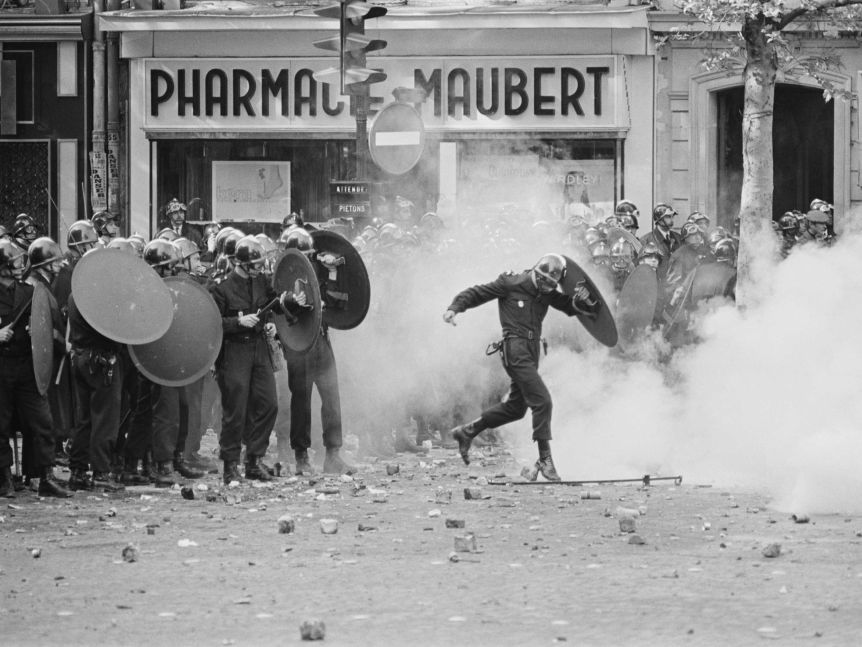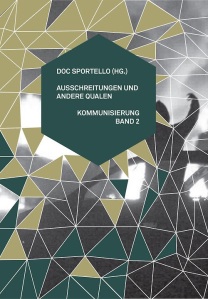[Once upon a time in land far, far away, Brooklyn circa 2011, some communists in situ realized that both the standard and radical versions of the Passover Haggadah were very stupid. So they decided to make their own communist version for their Seder. The following Haggadah is the first time this is being published online. It follows all the traditional 15 steps for easy use, but each section has its own rifts within. Follow at your own risk. Chag sameach and remember, next year in Diaspora!]
update 2018: new RED SEDER
A Communist Haggadah for the Passover Seder

[pdf] [booklet]
compiled by Jacob, Danielle & Scott
April 18th, 2011 Brooklyn
The Seder Plate:

Maror – Bitter Herbs: Representative of the harshness of our wage slavery.
Karpas – Green Vegetable: Representative of the spring season, the swerve, and the possibility of new growth including the welcoming of new comrades and friends, and the strengthening of friendships already consummated.
Charoset – Mixture of Fruit and Nuts: Representative of how the material means of production, the mortar for the bricks, is also our material means of reproduction.
Beitzah – Egg: Representative of the possibility of new forms of life and not simply new life as such. It is the symbol of the future, after the swerve, after the rupture, after the flood, what-have-you. It is an affirmative form of life, life for life’s-sake, not for the sake of life alone.
Zeroa – Lamb Bone: The lamb bone is representative of three ideas: 1) It is a instrument of marking, a way of understanding our comradeship as the ancient Hebrews understood theirs. Through this we may understand who is with us, who our comrades are, who our fellow travelers are. While our numbers may be small, our intentions are significant. 2) As an instrument of marking, it gives us great caution and great hope. It represents the danger of marking one as with/against us, but also the possibility of spreading the knowledge that we are privileged to have achieved with the aid of our comrades. Finally, 3) it is a symbol of sacrifice and death, of what is left behind. Of the endings that precede new beginnings, of the drawing closer between us, of our alliance’s rebellion against the powers of capitalism’s decree for formal, material, productivity.
Candle Lighting:

BAH-ROOCH AH-TAH AH-DOH-NOI EH-LOH-HEH-NOO MEH-LECH HAH-OH-LAHM AH-SHER KEE-DEH-SHAH-NOO BEH-MITZ-VOH-TAHV VEH-TZEE-VAH-NOO LEH-HAD-LEEK NER SHEL YOHM TOHV.
The 15 steps:
- Kadesh – Sanctification of the day, marked by blessing the first cup of wine.
There are four mandatory cups of wine on Passover, spaced out over the course of the Seder. One interpretation of them is that they signify God’s four promises of liberation to the Israelites. Since God died in the 19th century, and since there were probably no Israelites in Egypt, nor an exodus, we will interpret the four cups as representing the four cardinal virtues required for the revolution in the present moment.
The first cup signifies the virtue of Friendship.
הַגָפֶןפְּרִי בּוֹרֵא הָעוֹלָםמֶלֶךְ אֱלֹהֵינוּ יי אַתָּה בָּרוּךְ
Baruch atah adonai elohaynu melech ha’olam borei p’ri hagafen
- Ur’chatz – Washing of hands before the vegetable.
We pass a bowl of water around the table; each person pours water over their neighbor’s hands, helping them wash.
3. Karpas – We dip a green vegetable in salt water. We take a bite. We discard the rest.
The salt water on our table traditionally represents the tears of the Israelite slaves. The green vegetable usually represents the possibility of new growth. This year, let the salt water remind us of our own wage-slavery, and let the green vegetable remind us of the emancipatory potential, the swerves within it.
הָאֲדָמָה פְּרִי בּוֹרֵא הָעוֹלָםמֶלֶךְ אֱלֹהֵינוּ יי אַתָּה בָּרוּךְ
Barukh atah adonai, eloheinu melekh ha’olam borei p’ri ha’adamah
4.Yachatz – Breaking the middle matzah.
We break the matzah into two pieces, and hide one half, called the Afikomen. The Afikomen represents the rupture that we seek with the current state of things. This rupture, this break, comes from within the traditions we have, and yet hidden from them as well.
“From struggles over immediate demands to revolution, there can only be a rupture, a qualitative leap. But this rupture isn’t a miracle. Neither is it the simple realisation on the part of the proletariat that there is nothing else to be done other than making the revolution, given the failure of everything else. “Revolution is the only solution” is just as inept as talk of the revolutionary dynamic of demands-based struggles. This rupture is produced positively by the unfolding of the cycle of struggles which precedes it, and we can say that it still forms a part of it. This rupture is prefigured in the multiplication of swerves within the class struggle between, on the one hand, the calling into question by the proletariat of its own existence as a class in its contradiction with capital and, on the other hand, the reproduction of capital which is implied by the very fact of the proletariat’s existence as a class. The concept of the swerve designates the dynamic of this cycle of struggles, which exists in an empirically verifiable manner.” [Theorie communiste]
We exist in this rupture.
Read the rest of this entry »












